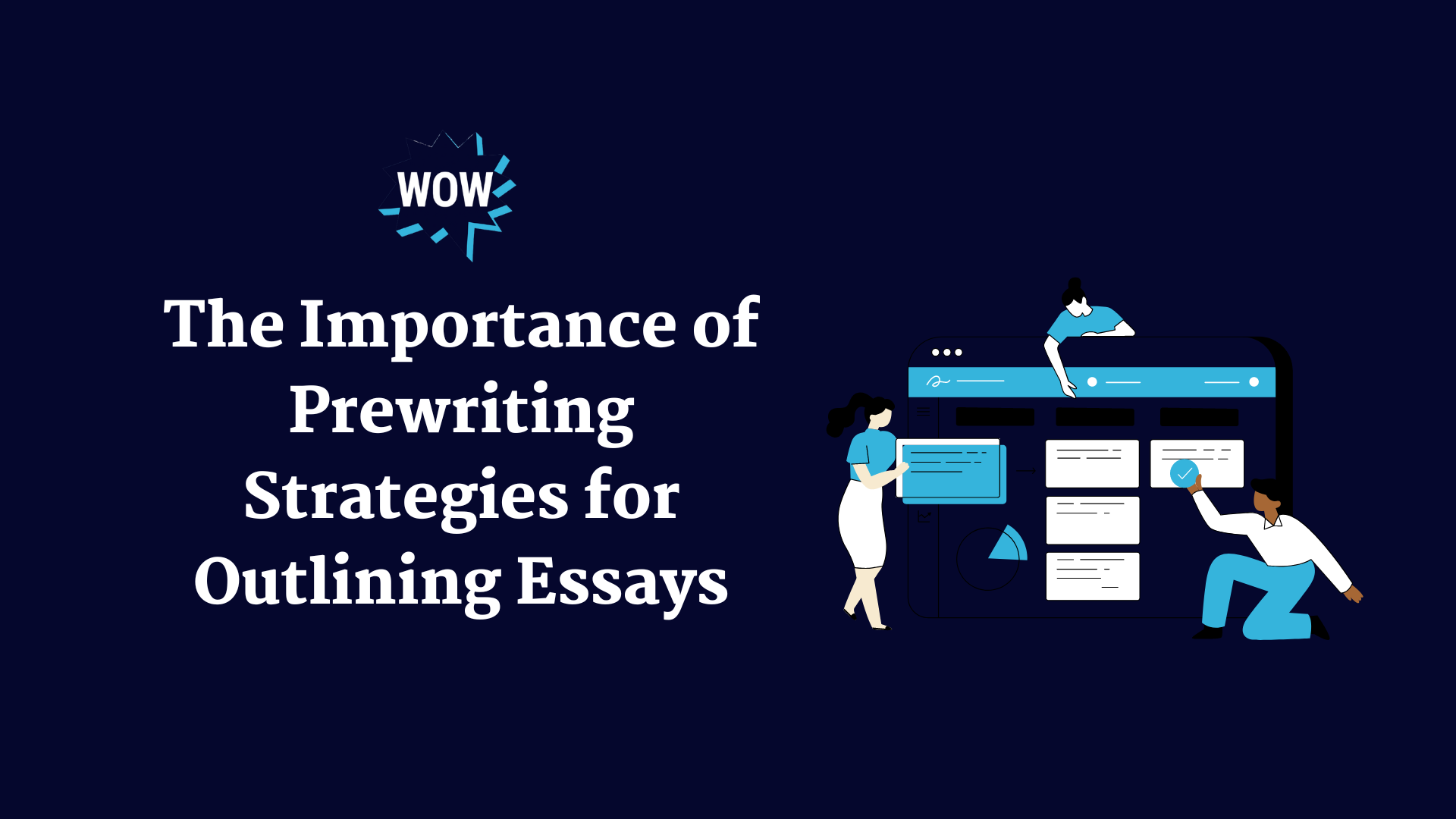
Effective prewriting can help writers develop ideas and structure their thoughts before they invest time in drafting, whether the writing task is crafting an essay, research paper, or blog post. Brainstorming, outlining, researching, and documenting sources are examples of prewriting strategies.
Motivation and audience awareness are also important aspects of the prewriting process. This can help students choose a topic and write with a stronger purpose.
Examples of Essays for Outlining Essays
- Organ Donations: Do We Still Have Enough? Argumentative Essay Examples
- Pandora And The Freemium Business Model Case Study
- Pastoral Reflection Counseling Essay Example
- Professionalism Essays Examples
- Project Reflection (Agile) Essay Samples
- Proper Argumentative Essay Example About Junk Foods Should Be Banned In Schools
- Proper Case Study Example About Compensation Discussion And Analysis: Nucor Corporation
- Public Administration Case Study Sample
- Risk Management Case Study: A Top-Quality Case Study For Your Inspiration
- Sample Dissertation Methodology On Brief Summary
- Sample Essay On Erikson’s Psychosocial Stages
- Self Improvement Essay Examples
- Social Work Practice And Evaluation Essay Examples
- The Americans With Disabilities Act Research Paper Examples
- The Importance Of Water In Everyday Life Essay Examples
- The Raven By Edgar Allan Poe Research Paper
- The ROE Vs. Wade Case Research Paper Examples
- The Strength And Application Of The Stanislavski System Essay Example
Brainstorming
Brainstorming is an essential prewriting strategy that helps writers identify a wide range of ideas to develop and support the thesis for their essays. For example, brainstorming can help writers think about any questions about the text and how they might answer them. Using this information can then be an important part of outlining when writing a paper based on a reading assignment.
During group brainstorming, it’s important to have a clear purpose and an agenda to ensure everyone stays focused on the task. This also can help prevent the group from descending into a free-for-all that doesn’t produce any meaningful ideas.
It is a good idea to prioritize quantity over quality during brainstorming. This will help weed out many of the “low-quality” or irrelevant ideas that might make it into the final essay draft. The next page, Idea Matrix, discusses one way to develop ideas for a paragraph or essay using a graphic organizer.
Outlining
Students can be tempted to skip over the outlining step in a rush to begin writing. However, beginning to write an essay without a plan is a bit like beginning any project without a blueprint–it may get finished eventually. Still, it is likely to be haphazard and incomplete.
By outlining, students create a framework for their essays that will help them determine the order in which they should develop their ideas and the relationships between those ideas. Outlines can be as simple or complex as the assignment calls for. For example, students can create a topic outline (which does not include complete sentences) or a point outline (which organizes ideas into numbered sections).
Using a template adapted to the type of essay, students should then use their outline as a guide as they begin writing. Outlines should be revised as the student writes so that the final product matches the outline. This process is repeated until the student has a polished, well-organized essay.
Writing
When an essay is drafted without an outline, the ideas can get mixed up or presented out of order. This can confuse the reader and make it difficult to follow. Taking the time to write an outline can prevent confusion and save writers time in the revision process.
Assigning practice exercises regularly can help students learn how to use prewriting strategies. Providing feedback can also help students improve their skills.
For example, if a student writes a paper about Alexander the Great, encourage them to use a mind map to display their initial thoughts. This will allow them to expand their thinking while still keeping the main ideas of their essay in a coherent order.
For another strategy, ask students to do a list-making activity. This will force them to think about their main ideas in a more organized way. This can also help them see whether any of their ideas need to be expanded or cut altogether.
Editing
Once a rough draft of the essay is complete, it’s important to edit for grammar errors, formatting issues, and style. Double-checking for these issues can help writers produce a more polished and effective writing piece.
It’s common for students to struggle with writing essays and papers. By providing students with prewriting activities, they can better organize their ideas and develop a clear structure for their writing pieces. In addition, the process of prewriting can also encourage students to think critically about their writing topic.
For example, by using a prewriting activity such as storyboarding, students can visually represent their idea to determine what details are most essential in forming their argument. By experimenting with different prewriting techniques, students can find what works best for them and improve their writing skills. By doing so, they can become more confident in producing quality writing pieces.
